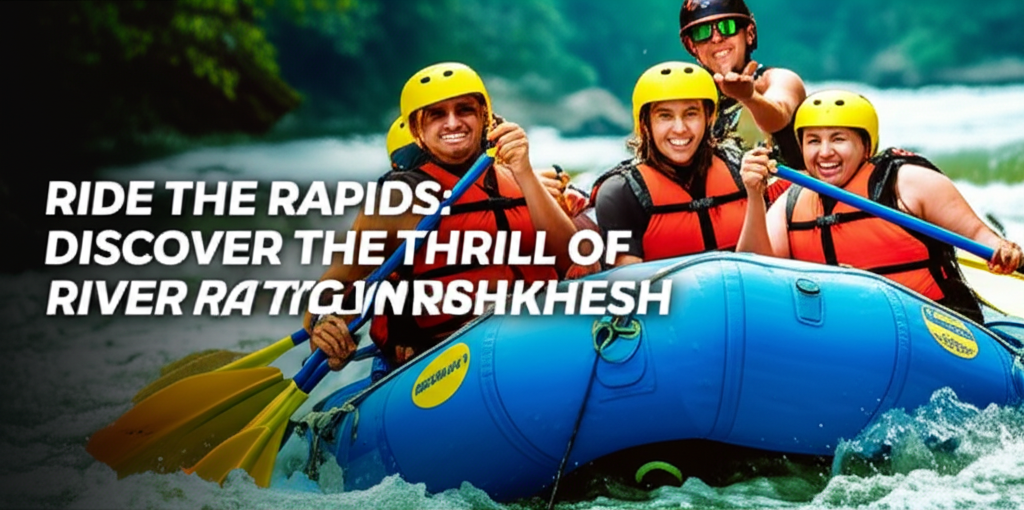A Thrilling Scene
The sun hung low in the sky, casting an orange glow over the Ganges River, its waters slicing through the foothills of the Himalayas like a gleaming ribbon. Excitement buzzed in the air, and I could feel my heart race as I suited up in a life jacket and helmet. Around me, groups of eager adventurers awaited the call to embark on a journey that promised both adrenaline and serenity. This was Rishikesh, the Yoga Capital of the World, where spirituality intertwined with adventure, and the roaring rapids beckoned.
As our guide briefed us on safety protocols and paddling techniques, a burst of laughter erupted from our raft. Megan, a seasoned traveler with a penchant for adventure, grinned, “I’ve been rafting in six countries, but I’ve heard Rishikesh’s rapids are among the best!”
Her enthusiasm was contagious. I wasn’t just about to experience river rafting; I was diving into a thrilling cultural immersion that would leave lasting memories.
The Historical and Cultural Canvas of Rishikesh
Nestled at the foothills of the Himalayas in Uttarakhand, Rishikesh holds a sacred place in Hindu mythology. Believed to be the site where the revered sage Raibhya Rishi meditated, it remains a spiritual hub. The city is known for its ancient temples and ashrams, where seekers from around the globe come to meditate, practice yoga, and find peace.
In the late 1960s, Rishikesh emerged on the global adventure tourism map when The Beatles visited Maharishi Mahesh Yogi. This sparked a new wave of spiritual seekers and thrill-seekers, leading to a brisk rise in tourism that combined both aspects.
Today, Rishikesh is not just a spiritual destination; it’s an adventure playground filled with opportunities for trekking, bungee jumping, and, most notably, river rafting. The Ganges provides a unique setting for rafting with its ranges of rapids and pristine surroundings, making it a must-visit for thrill-seekers.
Experience the Thrill: Traveler Testimonials
“Rafting here is a dance with the river. Every wave tells a story,” says Arjun, a local rafting guide with over a decade of experience. His passion for the Ganges was evident as he recounted tales of his adventures on the river, navigating through the Class III and IV rapids that punctuate the route.
Megan chimed in, “The moment we hit the first rapid, I felt an adrenaline rush like nothing else. It was this wild mix of beauty and chaos, surrounded by the breath-taking hills.”
And it wasn’t just the rapids that left a mark. Anna, a traveler from Germany, shared her experience of witnessing a group of kids playing along the riverbank after our exhilarating ride. “It gave me a deeper appreciation of the culture here. The locals really embrace the river — it’s part of their lives.”
Planning Your Rafting Adventure in Rishikesh
Best Time to Visit Rishikesh for Rafting
Rafting in Rishikesh is accessible year-round, but the most favorable seasons are:
- March to June: Temperatures range from 20°C to 35°C. Ideal for water sports, the river is at its maximum depth, providing thrilling rapids.
- September to November: Post-monsoons, the river calms down, making it perfect for all adventurers, including beginners.
Costs Involved
Most rafting packages range from INR 500 to INR 3000 ($7 to $40 USD) per person, depending on the length and difficulty of the course. Longer trips that include meals and transportation could be more expensive.
Booking Tips
- Pre-book Online: Use reputable platforms for booking and reviews. Last-minute spots may fill up quickly.
- Inquire About Safety Equipment: Ensure the service provider offers good quality safety gear.
- Plan for Off-Peak Times: For a lesser crowd, opt for weekdays rather than weekends.
Navigating Rishikesh: Your Adventure Awaits
Map Location
Rishikesh coordinates: 30.0865° N, 78.2673° E.
*
Seasonal Experience Comparison Table
| Season | Weather | River Conditions | Ideal For |
|---|---|---|---|
| March to June | Warm (20°C – 35°C) | High rapids (Class III-IV) | Thrill-seekers |
| July to August | Monsoon (20°C – 30°C) | Heavy rain (unsafe) | Not recommended |
| September to November | Cool (15°C – 25°C) | Moderate rapids (Class II-III) | Beginners, families |
Instagram-Worthy Spots and Tips
- Laxman Jhula: Snap shots of the iconic suspension bridge with the backdrop of the Himalayas.
- Triveni Ghat: Capture the evening Ganga Aarti, where thousands of diyas float on the water, creating a magical glow.
- Village Paths: Wander through local villages for candid shots of everyday life.
Photography Tips:
- Use natural lighting; the best photos come during the golden hour (early morning or late afternoon).
- Experiment with angles, especially from a higher viewpoint. The quaint nuances of Rishikesh come alive with creative framing.
Personal Reflections: My Adventure Awaits
As I paddled through the roaring rapids with my new friends, our combined laughter was amplified by the backdrop of the majestic Himalayan landscape. Rishikesh’s spirit is intertwined with every wave and ripple of the Ganges, and it encapsulated the essence of life — unpredictable yet exhilarating.
The experience didn’t just offer thrills but also an appreciation for the richly woven cultural tapestry surrounding the river. Each rapid carried with it echoes from the past, reminding us of the lives intertwined with this sacred water.
Hidden Tip Not Found in Guidebooks
While in Rishikesh, make sure to visit local vegetarian eateries such as “Chotiwala” or “Meals on Wheels.” Not only will you enjoy delicious local cuisine, but it’s the conversations with locals about their lifestyle and connection to the river that can turn a simple meal into a memorable experience.
Rishikesh’s charm lies in its ability to beautifully blend adventure with spirituality. Whether you’re a seasoned rafter or a first-time adventurer, the river unfurls its mysteries to those willing to dive into its depths. Embrace the thrill, immerse yourself in the culture, and let Rishikesh be a chapter in your travel story that you’ll never forget.

